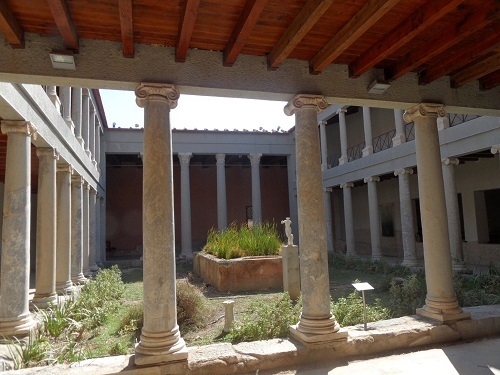
Join Thor and me as we visit the reconstructed Roman villa in Kos Town.
NOTE: Since our recent trip to Greece to research more settings for my novel-in-progress, THE ARIADNE DISCONNECT, Thor and I knew we had to return to this magical region. My first entry in this new blog series posted here on Saturday, 10/20/2018. It gives an overview of our rambles from Athens to seven islands in the Dodecanese and Cyclades groups, ending our ferry-hopping pilgrimage on the anciently sacred island of Delos.
In last week’s post, Thor and I collected leaves from the venerable Hippocrates Tree for a scientific study. After that, we strolled on through the pleasant lanes of Kos Town, past the central Greek Orthodox church damaged in the recent earthquake. (Fallen pillars and masonry on the other side of the building blocked pedestrian passage.)
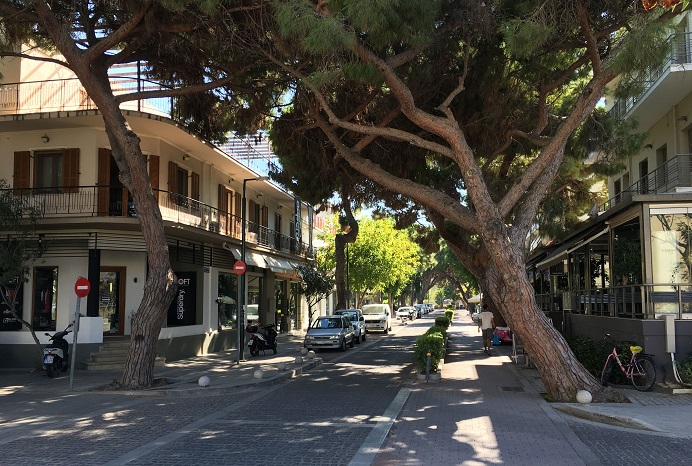
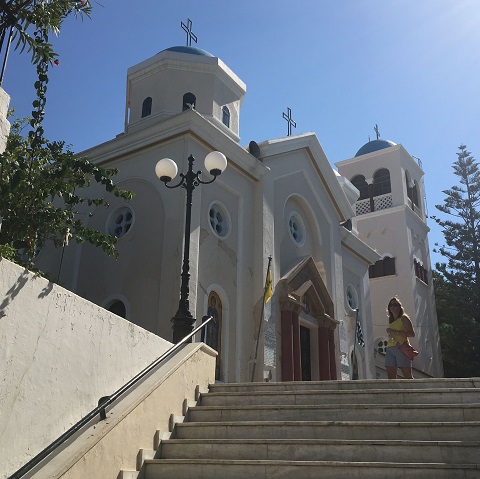
This icon on the side of the church seems to be eyeing one of the earthquake cracks with alarm.

There are so many ancient sites within an easy walk around town! Next we walked to the Casa Romana, a restored Roman villa built in the 2nd century AD, in a style similar to homes of the wealthy in Pompeii. It has 26 rooms and 3 open-air atriums with fountains, mosaics, and statues.
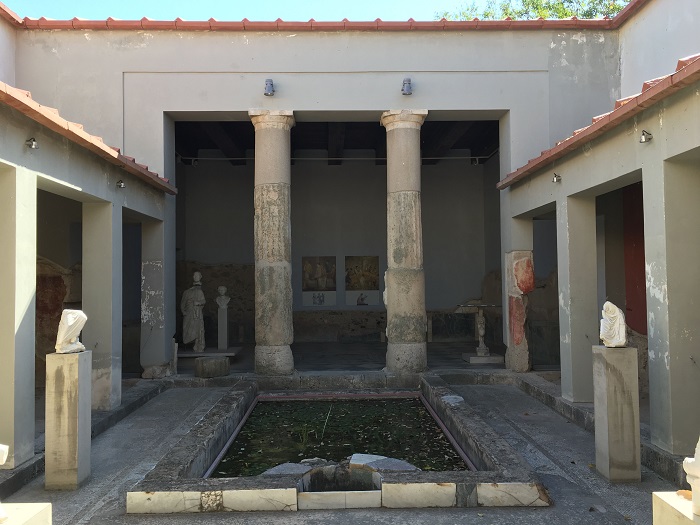
The reconstruction that allowed us to walk inside the villa walls (as contrasted with most of the ancient ruins that are mostly footings) provided an immersive sense of the way these wealthy people lived. They decorated their homes with statues (most of them, including a statue of the healer-god Asklepios, are in the town museum we will visit in next week’s blog post), murals, and mosaics. This mosaic featuring sea creatures emphasized the importance of the sea to this port community.
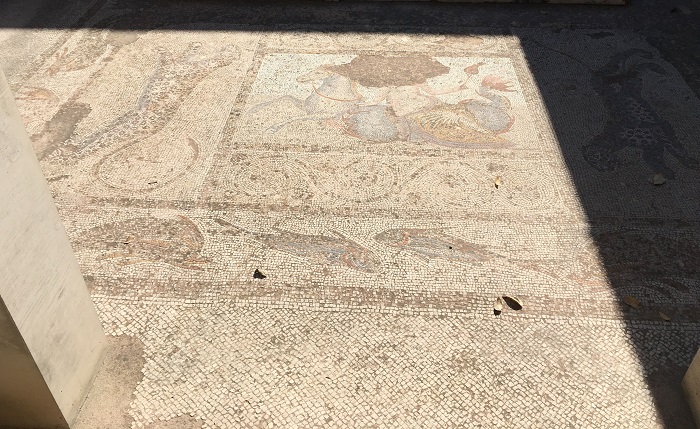
Finds from the site excavation include elaborately modeled ceramic oil lamps like this one from around 100 AD. Behind the lamp is an example of polychrome marble mosaic inlays in geometric shapes:
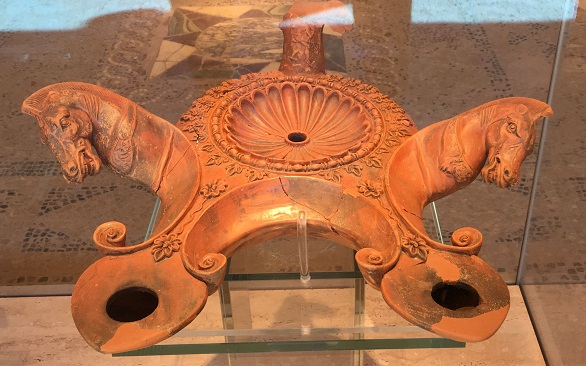
What was probably a storage room now holds more utilitarian clay vessels found on the site:
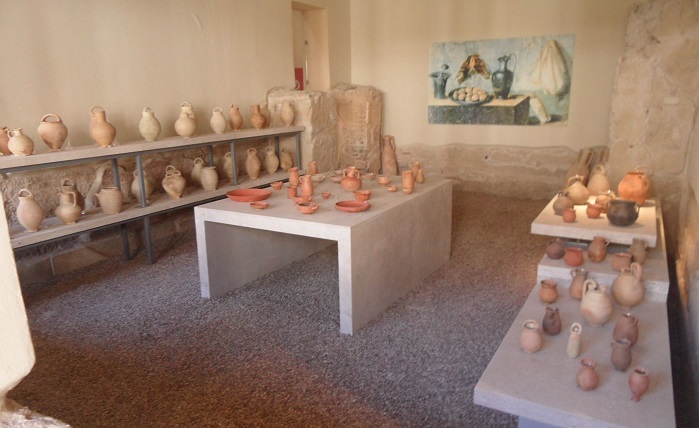
The upstairs gallery looks down on the largest central atrium.
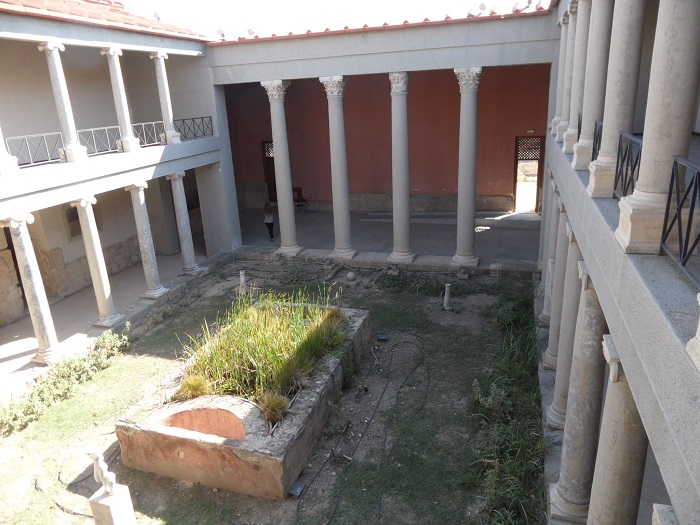
Another mosaic floor reveals motifs of wild animals. The figures apparently reflected the personality of the owner, as well as honoring the popular Dionysian cult of the time.
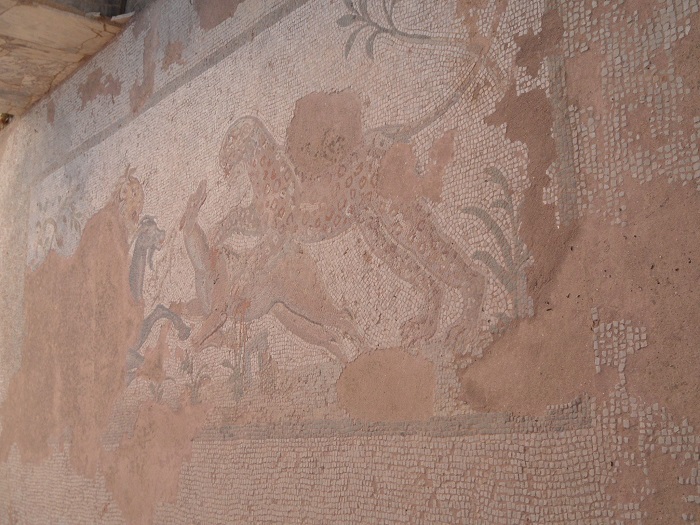
No Roman villa would be complete without hot, tepid, and cool baths. (You may recall the remains from Kameiros in an earlier post.) The footings of this villa’s bathing area were apparently later covered by a marble floor, but this diagram illustrates the setup:
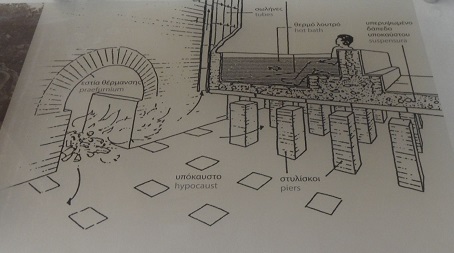
For a colorful, dramatic glimpse of Roman lives in the times of Julius Caesar, I recommend the well-researched HBO series “Rome.” The powerful, sensual matriarch Attia demonstrates the delights of such a bathing room in the first episode. In the Casa Romana, images of Eros (deity of love and sensuality) in murals and clay lamps apparently signaled the entry into private family chambers.
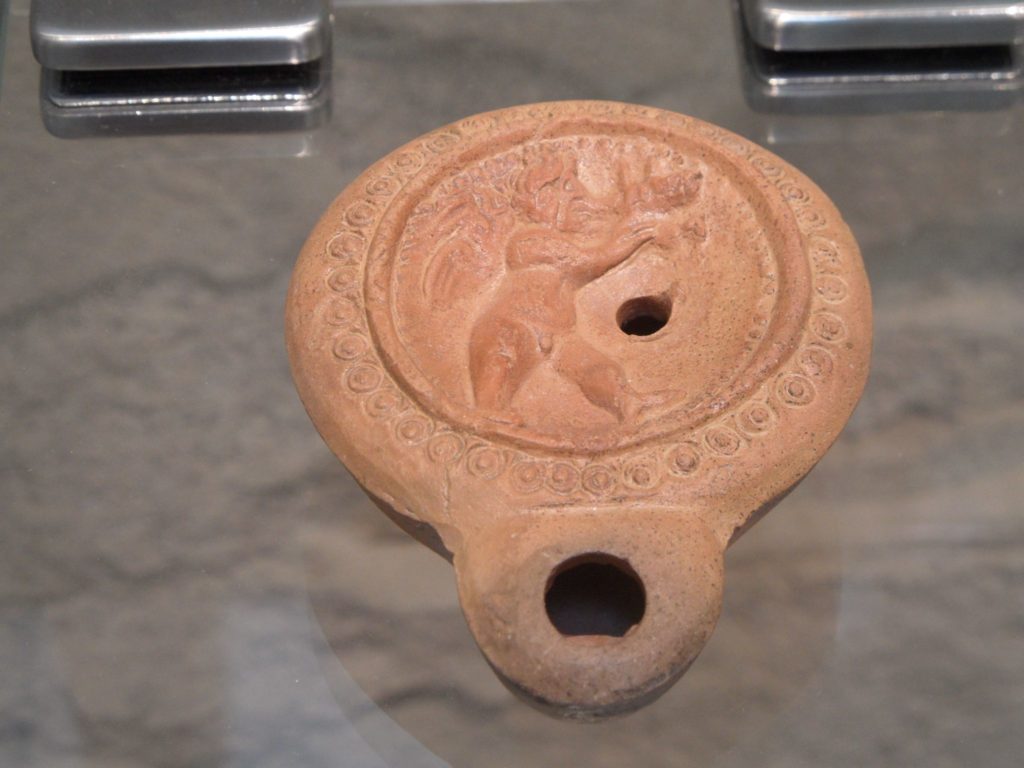
Erotic and phallic images were an accepted part of life, as honoring the gods and fertility. This clay lamp portrays an “ithyphallic figure” atop a tree trunk, with a satyr playing a flute at the base, possibly another nod to the cult of Dionysos. Behind it is a mural with image of Eros playing the lute.
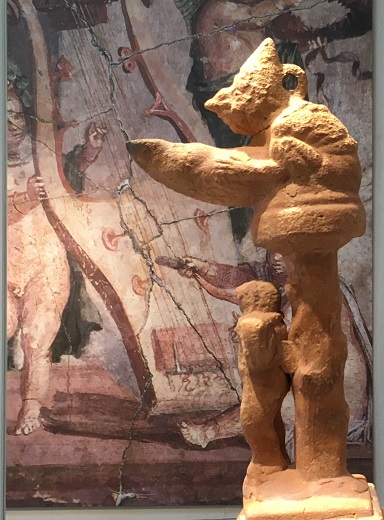
The myths of Dionysos (important in my novel-in-progress) include the story of his capture by pirates, when he turned the tables on his captors by transforming into a lion and scaring the crew into leaping overboard. Once in the sea, they became some of his sacred dolphins. He also caused the ship mast to sprout into a grape vine, ready to produce his gift to humanity of wine. (Image is from a Greek vase painting of around 500 BC.)
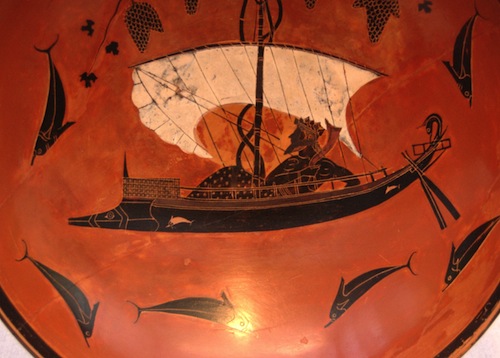
After our Casa Romana visit in the heat of the day, Thor and I headed to — where else? — a nearby beach for a cooling swim. There we experienced our own pirate incursion when this tourist ship invaded our quiet cove.
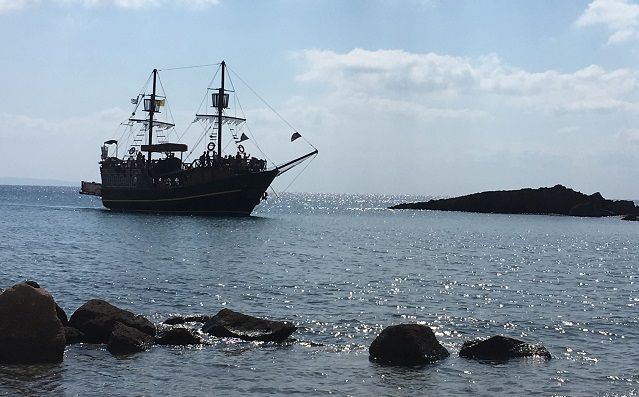
Perhaps by favor of Dionysos or Poseidon, the pirate horde soon departed and left us to enjoy the sparkling clear sea and sculpted rock formations.
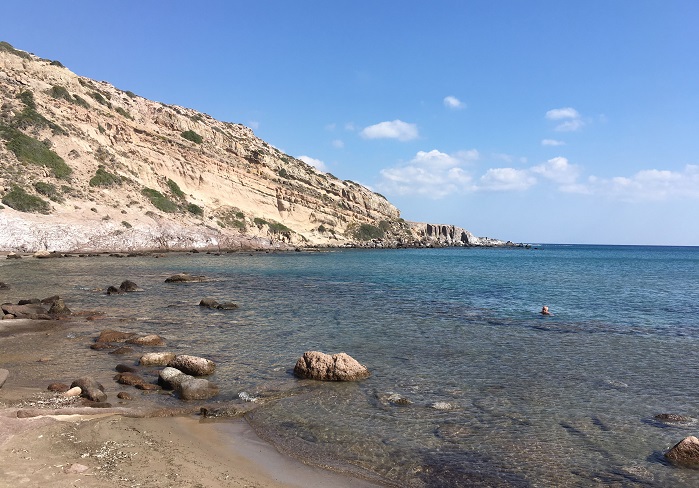
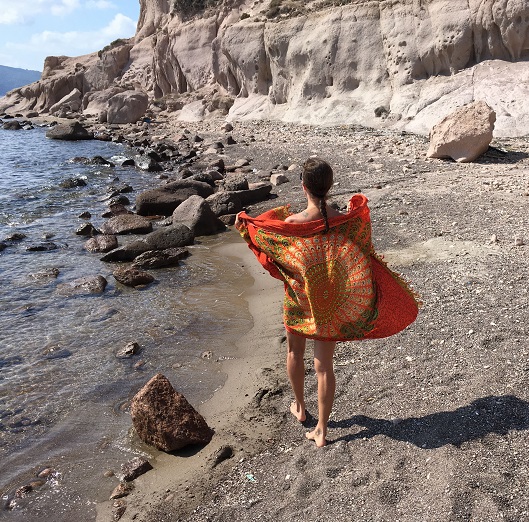
Next week: Treasures of the Kos Museum, including this vase depicting an Amazon warrior. There are modern Amazons in my Ariadne novels, based on historical evidence of actual women warriors. I dedicate my new Amazon Corybantes to mentor Vonda McIntyre, dearly missed. Among her many generosities, she steered me toward the fascinating research compilation The Amazons, by Adrienne Mayor.
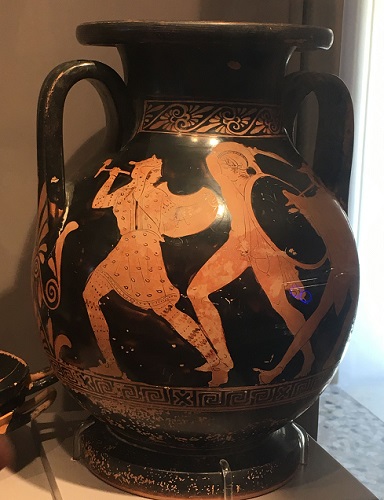
*****
You will find The Rambling Writer’s blog posts here every Saturday. Sara’s latest novel from Book View Cafe is available in print and ebook: The Ariadne Connection. It’s a near-future thriller set in the Greek islands. “Technology triggers a deadly new plague. Can a healer find the cure?” The novel has received the Chanticleer Global Thriller Grand Prize and the Cygnus Award for Speculative Fiction. Sara has recently returned from another research trip in Greece and is back at work on the sequel, The Ariadne Disconnect. Sign up for her quarterly email newsletter at www.sarastamey.com

1 thought on “The Rambling Writer Explores More Greek Islands, Part 21: Casa Romana on Kos”